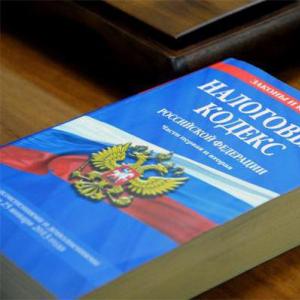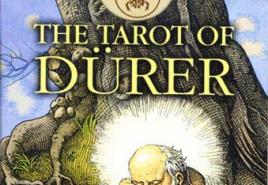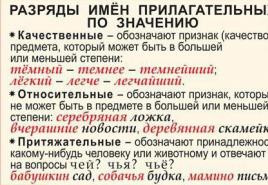Horse breeding business plan. Breeding thoroughbred horses: does the business idea have any prospects?
Horse breeding is a very expensive business that requires the founder of the enterprise to have a professional approach and knowledge of a number of specific nuances of its organization and promotion. The business plan for horse breeding discussed in this material is a document that provides the main estimates and directions of expenses for opening a horse farm. After reading it, you will get a clearer idea of what legislative acts the business in this area is based on, how the production process is organized at the stable, what equipment needs to be purchased to equip the entire infrastructure of the enterprise.
General concept of the project
As a branch of livestock farming, horse breeding is a rather expensive and technologically complex activity that requires significant start-up investments. In most cases, entrepreneurs starting a business in this industry are not beginners, but are developing an existing business. Therefore, the greatest difficulties on the way to creating a highly profitable horse breeding enterprise await those who first decided to start breeding horses and do not have significant business experience.
This business plan for horse breeding with calculations is aimed primarily at beginning entrepreneurs, therefore it contains information relating only to the initial stage of the operation of the enterprise, from its opening to reaching the break-even point.
Brief market analysis
Speaking about domestic horse breeding, it should be noted that this market is currently at the stage of revival. Many horse breeding enterprises were unable to cope with the problems caused by the crisis of 2009-2010 and fell into ruin. Only large farms for breeding sports horses that actively worked with foreign markets, and those who had the opportunity to diversify their business by reorienting their activities to other areas, were able to cope with the challenges.
Horse breeders actively working in the country are currently divided, there are not many of them left, and they see each other primarily as competitors. This situation caused serious concern to the state leadership, since after the crisis, unfavorable trends began to rapidly increase in the industry, often with a criminal overtone.
In order to overcome these negative phenomena, special Presidential Decree No. 1058 was signed in August 2011. This regulatory act spells out all the legal conditions for the proactive and full development of all segments of the horse breeding market.
As a rule, businesses in this area are opened by people who are guided not so much by economic considerations as by an interest in the horses themselves. At the initial stage of development, small horse breeding farms rarely become a source of significant profit and have high profitability. Considering that it takes considerable time to raise a breeding herd, the main income for such stables comes from the various services that can be obtained from them. The most common are horse riding lessons and organizing horseback riding.
Project Description
The creation of a horse farm and, on its basis, a horse breeding enterprise involves solving the following socially significant problems:
- Creation of a new business entity.
- Creation of new jobs.
- Increase in tax revenues to the local budget.
- Meeting the population's needs for leisure services using horses.
The most preferred location for opening an enterprise is a rural area, slightly distant from large cities and transport communications.
The main source of funds for the implementation of the project is subsidies from the regional fund for state support of farmers.
The organizational and legal form of the enterprise is a peasant farm, in which the position of manager is performed by the founder.
Taxation is carried out according to the collection system of the Unified Agricultural Tax (Unified Agricultural Tax) with a rate of 6% of profit.
The project is designed for 3 years (until the enterprise reaches the break-even point, taking into account discounting).
Main stages of the project:
The estimated life cycle of the project is 2 years.
Areas of activity and services
This business plan provides for the following areas of work:
- Raising horses for agricultural work.
- Raising and selling breeding horses.
- Organization of recreational tourism and leisure.
- Horse riding lessons.
The most profitable and, at the same time, expensive direction is the breeding of expensive breeds for further sale at auctions. To implement it, you need to purchase 10 foals, the necessary feed, and create conditions for the normal development and care of animals. It will be possible to start selling breeding horses in 2-3 years. Market analytics shows the following sales results at Russian auctions in 2016:
As can be seen from this table, breeding sports and recreational horse breeds brings great profits, but requires significant time and material costs.
A private horse farm provides horse riding training services. The average tuition fee is 2-2.5 thousand rubles per hour.
Rental of horses for walking is paid at the rate of 1 thousand rubles per hour.
The company combines its main activity with the provision of services from the moment it began its work.
Description of objects
Construction of a horse farm is one of the costly items for this project. The production infrastructure of the enterprise includes:
- The stable.
- Outbuildings for storing feed.
- Warehouse for storing equipment and equipment for horses.
- Administrative premises (with rooms for service personnel, veterinary center, guests).
A stable is a special building for keeping horses. In this case, it is a building with divided sections (stalls and stalls). The feed room, harness room, inventory room, and room for duty personnel can be located in a separate wing or annex to the stable. The facility must have a water supply for washing horses and a special room for testing stallions' semen.
The stable must be built from frost-resistant materials that ensure heat retention in winter. Between the stalls there is a corridor 2 meters wide. The minimum dimensions of the stalls are 4.5 x 3 meters; they are separated from each other by solid partitions.
The stalls are square in shape (3 x 3 meters), they are designed to house the most expensive stallions or horses with diseases.
The adobe floor of the stable is sloping towards the animal's hind legs, which ensures urine drainage.
There are special technological openings in the rear wall of the stable for cleaning manure.
The construction of the stables is ensured by natural ventilation through the installation of windows measuring at least 1 x 1 meter.
Near the stables there is an area for tethering and walking animals.
Breed selection
The most significant costs of the project are provided for the purchase of breeding stallions. All breeds are conventionally divided into:
- Heavyweight, hardy and powerful horses designed for agricultural work.
- Sleds used in sports competitions.
To reach a mature state, sport horses need at least five years, and racing horses - at least 3 years.
In addition, there is a classification of breeds by purity:
- Purebred (16/16 shares).
- High-blooded (15/16 shares).
- Half-blooded (11/16 shares).
- Local (3/16 shares).
- Crossbreeds (with no signs of breed).
It goes without saying that this classification is the main factor determining the cost of stallions. Horses from Holland, Belgium and Germany are in greatest demand on the world market.
Manufacturing process
The organization of reproduction of the breeding herd provides for the receipt of a foal from each mare annually.
The level of reproduction depends on a number of factors:
- Condition of the food supply.
- Fertility, productivity and viability of livestock.
- Method of insemination.
- Intensity of culling.
- Measures to prevent infertility.
This business plan provides for the creation of a commercial herd of breeding horses, reproduced through artificial insemination. The estimated volume of introduction of first fillies into the herd is two individuals per 10 mares per year. The permissible culling limit is 20-25% during the first lactation.
Recruitment
Recruiting personnel to service horses is very difficult and requires great attention from the founder of the enterprise. This is explained by the fact that working on a horse farm is not considered prestigious, but at the same time it requires significant knowledge and skills in this industry. According to experts, working on horse farms is the lot of people who fanatically love horses and work not so much for money as for the sake of their passion for these noble animals.
At the initial stage of project implementation, it is planned to form the following staff of the enterprise:
| № | Job title | Number of staff units | Salary (in thousand rubles) |
Salary expenses per month (in thousand rubles) |
Payroll per year (in thousand rubles) |
| 1 | Accountant | 1 | 30 | 30 | 360 |
| 2 | Livestock specialist | 1 | 40 | 40 | 480 |
| 3 | Horse breeders | 3 | 25 | 75 | 900 |
| 4 | Veterinarian | 1 | 50 | 50 | 600 |
| 5 | Driver | 1 | 30 | 30 | 360 |
| 6 | Security guard | 3 | 25 | 75 | 900 |
| 7 | Building and construction maintenance specialist | 1 | 30 | 30 | 360 |
| Total | 11 | 165 | 330 | 3 660 |
Thus, the total wage fund for the horse farm will be 3 million 660 thousand rubles per year.
Financial plan
When forming a financial plan for a company, one should take into account the structure of the domestic market for thoroughbred horses in terms of sales value and average price per head. For 2016 it looks like this:
| Breed classification | Sales | Sales percentage | Price, average per head (thousand roubles.) |
| Purebred | 233 | 11 | 75 |
| Half-breeds | 420 | 20 | 21 |
| Trotters | 1.04 thousand | 49 | 18 |
| Heavy trucks | 420 | 20 | 10 |
| Total | 2.1 thousand | 100 | 23.5 |
This information is necessary to determine the costs of purchasing horses. The business plan provides for the purchase of 8 half-breeds and 2 purebred stallions in the amount of 350,000 rubles. Taking into account the fact that feeding one horse costs 200 rubles per day, and full maintenance per month requires about 5 thousand rubles, the payback period will be no more than three years. The profitability of the enterprise after reaching the break-even point is 30-40%.
After the start of horse sales at auctions, the profitability of the horse farm will increase to 230-250%.
Estimated costs for 1 year of operation:
| No. | Indicators | Amount, thousand rubles |
| 1 | Production costs (feed, medicines, etc.) | 5 900 |
| 2 | Labor costs | 3 660 |
| 3 | Insurance premiums | 244 |
| 4 | Fare | 96 |
| 5 | Public utilities | 120 |
| 6 | Expenses under service contracts | 106 |
| 7 | Tax payments (Unified agricultural tax 6% “income minus expenses”) | 120 |
| 8 | other expenses | 100 |
| Total expenses | 10 346 | |
Risks
Horse breeding as a type of business is associated with high risks caused by the specifics of the activity and market trends. The main ones are:
- The influence of seasonal factors on the volume of services provided.
- Instability of demand for breeding horses.
- Reduced purchasing power of service consumers.
- Sharp fluctuations in the cost of feed.
Risk factors are mitigated by diversifying the enterprise’s services and changing the areas of horse breeding.
conclusions
An example of this business plan for creating a horse breeding enterprise clearly shows that this type of activity is profitable and high-risk.
Significant investments will be required to purchase horses, acquire ownership or rent a plot of land (at the rate of 18-20 acres for 10 horses), and build a stable with a complex of utility buildings.
Particular attention should be paid to the selection of qualified specialists for positions such as veterinarian and livestock specialist. The normal development of the horse population, their development and the possibility of profitable sale on the market largely depend on them.
Opening an enterprise will objectively require high tension and perseverance from the founder. He must have a sufficient level of industry knowledge, understand the nature of activities in this area and be able to take responsibility for the operation of the enterprise, ensuring environmental safety, and maintaining the health of the horse population.
A correct and meticulous approach to fulfilling all points of the plan and following the calculations will make the horse farm a profitable enterprise with high profitability.
Horses are one of the most beautiful and graceful animals. Many people attribute the ability to heal to horses. For some, it's a way to calm down while spending time riding a large, friendly creature.
People who breed horses often turn their hobby into a very profitable business.

However, horse breeding is not an easy way to make money. A business plan for horse breeding involves considerable financial and physical investments in the process. If you are not one of the timid people and are sure that you have enough strength, definitely go for it. The profitability of a horse riding business can reach 300%!
There is more than one way to make money from horses: the business plan involves profiting from breeding horses for sport and work, providing horses for walking, and perhaps even from breeding animals for the purpose of meat production.
Return to contents
Horse Care Basics
To begin with, take your time and study the characteristics of horses, their unusual behavior, rules for the supervision and care of animals, visit other equestrian schools or stables to include in your business plan all the nuances and additional costs that you did not know about before.
 If you have never dealt with horses before and are starting your business from scratch, then it would be good to draw up a clear business plan. It needs to determine the main category of clients and the type of your activity. Assess the state of the market. Although, according to statistics, there are stables in only 4% of cities with a small population.
If you have never dealt with horses before and are starting your business from scratch, then it would be good to draw up a clear business plan. It needs to determine the main category of clients and the type of your activity. Assess the state of the market. Although, according to statistics, there are stables in only 4% of cities with a small population.
Be prepared for the fact that preparing the animals to the point where you can make money from them will take a lot of time. So, to prepare a sports horse, you will need 5-6 years, and to prepare a racing horse, 2-3 years.
Determine the format of your enterprise: stud farm, horse rental organization, horse breeding farm, etc.
When choosing a place to organize a business, be guided by the surrounding environment; if possible, give preference to places near the forest or in the field. There it will be much easier to build a corral for horses and fence off a place for grazing animals; if you are going to breed them, then this is an additional saving on feed. You also need to build pens for animals, sheds for storing food, premises for working staff, and a locker room for visitors. If your business plan includes horse breeding, then consider building an indoor arena.
To make your business more successful, when buying horses, give preference to breeding animals. Be sure to use a good veterinarian when choosing animals. If you are planning to seriously get into the horse business, you definitely need a “personal” livestock specialist who will be your assistant and adviser in most matters. He will help you decide on regular suppliers of feed and sawdust, and will also advise you on a number of other issues.
Return to contents
The most popular ways to make money on horses
 A business plan for breeding and selling thoroughbred horses is very profitable. Animals from Belgium, Germany and Holland are especially valued. It’s no secret that such a business requires huge investments, but if you really want it, you can find worthy investors. A living example is the Ukrainian horse farm, located on 12 hectares of land. The founders of this business managed to attract investors who invested about seven million dollars at the initial stage of implementing the business plan.
A business plan for breeding and selling thoroughbred horses is very profitable. Animals from Belgium, Germany and Holland are especially valued. It’s no secret that such a business requires huge investments, but if you really want it, you can find worthy investors. A living example is the Ukrainian horse farm, located on 12 hectares of land. The founders of this business managed to attract investors who invested about seven million dollars at the initial stage of implementing the business plan.
The equestrian club also brings in serious income. This business plan involves making money by teaching horse riding and renting trained horses. According to the latest data, horse rental costs 600-800 rubles per hour, and horse riding lessons - from 1,300 per hour. If you decide to earn money in this way, then you will have to seriously try to recruit staff, choosing highly qualified people who have extensive experience in communicating with animals.
According to many stable owners, a dozen thoroughbred horses can bring in a profit of about 3 million rubles a year. Of course, horses require huge investments: to build a high-quality plant for breeding and keeping horses, you may need about 20-40 million rubles. But considering that the calculation made above provided for the horse’s workload for 3 hours a day, and the working day for 8-10 hours, it is quite possible to assume that the payback time for a horse farm will be about 2 years, or even less.
Horse breeding is an interesting and profitable type of business. Strong and intelligent animals, horses were domesticated thousands of years ago. People used them as labor and transport; meat, skin, and horsehair were also used. A business approach to fattening horses or raising a foal can bring good profits.
Horse breeding can become a profitable business if you add business calculations to everyday ingenuity
Horse breeding is a complex and costly process. Correct calculation is not complete without a business plan for horse breeding. A business plan answers the question of whether it is worth investing in a project. It determines how much initial capital should be, analyzes possible problems and ways to solve them.
Creating your own farm involves the following costs:
- rent or purchase of land;
- construction of a stable;
- purchase of livestock;
- provision of food;
- staff salaries.
Documentation costs are low. No special permits are required for this type of activity. By registering as a legal entity, you can acquire ownership of a plot of land. If funds are limited, it is possible to lease the land in whole or in part.
Pay special attention to personnel selection. Both skilled grooms and auxiliary workers will be required. Agree with your veterinarian about preventive examinations, vaccinations and treatment of your livestock.
Investments at the start can reach tens of millions of rubles. But with the right choice of business concept and efficient spending of funds, the profitability indicator is very high. It is capable of up to 300%. The payback period in case of favorable developments will be at least 5-7 years.
Ways to make a profit
Horse breeding as a business involves various ways of implementation. It is recommended to invest fixed assets in areas that bring the greatest profit. What is often chosen as a leading concept?
- Breeding horses for meat. The minimal cost of keeping horses and the availability of pasture make this type of horse breeding very attractive. Feeding costs, as a rule, are noticeably lower than income from the sale of horse meat.
- Livestock breeding. The high cost of stallions and mares of elite breeds ensures good profits from breeding and sales.
- Riding school and hippotherapy. City residents are often willing to pay for horse riding lessons, as well as participate in developmental and rehabilitation classes.

Such a business requires considerable investment, but the profitability can be high
Most owners try to combine different types of activities. Many ways to generate income can be either primary or secondary, depending on the situation.
- Rental of premises. Private owners are happy to place their horses in the nearby stables.
- Animal rental. The temporary owner receives the right to care for the horse and ride it. Some tenants get used to the animal and subsequently buy it.
- Sale of accessories. Trade in accessories for riding and horse care will help attract new customers.
When choosing a direction, you need to take into account the location of the farm. Residents of large cities are mainly interested in therapeutic and developmental activities. Group horseback riding trips and walks are in demand in resort areas. Beef farming will be profitable in areas where there is space for grazing.
Thoroughbred horses are valuable meat
Purchasing horses
The horse business for meat production includes the breeding and fattening of beef horses. It is recommended to immediately purchase purebred horses with a good pedigree. They have a higher yield of meat with improved taste. With such initial data, the investment will pay off faster.

Horses of specially bred breeds are best suited for raising for meat.
Breed selection
These horses have a massive build, short legs and a wide back. In our country, various breeds have been bred for meat production, for example:
- Kazakh;
- Yakut;
- Novoaltaiskaya and others.
Breeds adapted to local conditions are best suited for breeding. These horses are unpretentious, resistant to diseases and quickly gain weight.
Properties of horse meat
Horse meat is dark red dense meat with streaks. It is nutritionally comparable to beef, containing about 70% water, 5% fat and 23% protein. The back part is considered the most delicious. Pieces of increased fat content are taken from the neck or peritoneum. There are no strict standards for the classification of horse meat; it is conventionally divided into two categories.
- Meat from foals one and a half to two years old is considered dietary.
- Marbled meat with a higher fat content is obtained from adult horses 3-5 years old.
Features of use
Horse meat is traditionally popular among peoples with a nomadic lifestyle: in Tatarstan, Kazakhstan, Kyrgyzstan. In Europe, horse meat is rarely used in its pure form, but is added to sausages. It gives meat products elasticity and a pleasant taste. Among Muslims, eating horse meat is not encouraged, but there is no strict ban on it, unlike India or Israel.
Profitability: in the pasture and in the stables
In the herd
Keeping a herd on pasture is more profitable in terms of feed costs. Horses are herbivores, and pasture vegetation is best suited for their nutrition. To improve the properties of green mass, nutritious perennial plants are sown onto the grass. Not far from the pastures, it is recommended to equip pens or stalls where the herd waits out cold nights and frosts. Such temporary shelters have food, water and salt in stock.

Free life on the pasture has a good effect on the taste of meat
In the stall
To increase profits from breeding horses, they are kept and fattened in a stable. The building is designed at the rate of 6-10 sq. m per animal. Heating is not required, but good thermal insulation and absence of drafts are important. At the initial stage, it is not necessary to purchase expensive automatic equipment: feeders, drinking bowls. Subsequently, the stable can be equipped with the profit received. It is much more important to keep horses clean and well fed.
Horses destined for meat cannot be used for farm work. This negatively affects weight gain and quality of horse meat.
Which is more profitable?
The payback period for pasture maintenance is 1-3 years. After slaughtering, the meat is dense and tasty, although somewhat harsh. It has dietary properties due to its low fat content. When stable breeding, the horse gains weight faster and develops fatter and more tender meat. Despite the high costs of procuring and purchasing feed, the profitability of this method of breeding is noticeably higher.
Basic principles of fattening
Feed quality
Horse meat farming as a business on an industrial scale is not easy to implement. The horse is a finicky animal, demanding food. Feed for breeding requires high-quality food, without large solid inclusions, thorns, or mold. The same, however, applies to breeding horses at home.
Feed composition
The main part of the diet consists of grass and hay, which are enriched with various components.
- Oats, barley, clover. They provide a large amount of energy, which stimulates weight gain.
- Bran. Added to the diet to improve digestion.
- Vitamins. They come in the form of ready-made vitamin supplements, as well as as part of green food.
- Rock salt. A horse needs about 1 kg per month. You can replace salt with mineral supplements.

Grass and hay in the diet of ungulates raised for slaughter are supplemented with grain, bran, vitamins and salt
Meat yield
Advantages of broiler housing
Prebiotics
When rearing in stables, modern technologies for accelerated fattening are used. Without giving up hay, prebiotic feed is included in the diet. They are digested 30-40% better than standard mixtures, so there is a rapid increase in muscle mass. Prebiotic feeds help realize the body’s internal resources:
- stimulate the vital activity of the body and microflora;
- accelerate fermentation processes;
- neutralize toxic substances.
Meat yield
By the age of six months, foals weigh 200 kg, and after another six months the weight of the animals reaches more than 400 kg. Particularly heavy specimens can gain up to 600-800 kg. After the horse is slaughtered, the meat yield is approximately 54-62%. Due to rapid weight gain, horse breeding becomes no less profitable than cattle breeding.
Diet preparation
It is necessary to regularly consult with specialists on how to feed horses correctly. Particular attention should be paid to the period before slaughter, when horses are rapidly gaining weight. A balanced nutrition scheme is based on the conditions of keeping, breed, and health status of the animals. Select reliable feed suppliers who guarantee its quality.
Procurement and sale of horse meat
Preparation for the winter
Traditionally, horse slaughter, which is called “sogym” among nomadic peoples, begins before the onset of winter. Before slaughtering horses destined for meat, grazing on pastures is combined with intensive fattening for 3-4 months. In addition to daily food, they give corn, carrots, and turnips.
- As cold weather approaches, horses gain weight faster and the percentage of meat yield increases.
- Due to the reduction in the number of animals in winter, less feed will be required.
- During the cold season, it is easier to ensure storage conditions for meat.

Butchering a carcass is a real art. Some parts will be used for sausage, others for steaks
Slaughter
The ability to kill a horse was passed down in nomadic tribes from fathers to sons. The horse was tied up and its neck was cut. Carcasses were often butchered directly on the ground, with dirt getting on the meat. In a modern slaughterhouse, a horse is immobilized with a strong blow to the head or an electric shock and butchered, observing the rules of hygiene. It is more profitable to slaughter horses of meat breeds, but sometimes owners sell used draft or sports horses for meat.
Sales
Raising horses requires a clear organization of marketing of meat obtained as a result of slaughter. Frozen and chilled horse meat is delivered to meat processing plants and sold through retail trade. Dietary meat from young animals is used in medical institutions and sanatoriums. A promising way of investing is to purchase your own workshop for the production of sausages.
Summary
A horse is a difficult animal to care for, but the work of a livestock breeder is lively and interesting. Even with experience in how to raise horses efficiently and profitably, it is necessary to constantly monitor current trends in animal husbandry. Within just a few years, a flexible business approach and consideration of local circumstances will allow the initial capital investment to be recouped. Horse breeding will bring you not only material benefits, but also the joy of communicating with these smart and beautiful animals.
Horse breeding is one of the livestock industries that people initially consider as a hobby, and only secondarily as some kind of serious business, since keeping and breeding horses is a multifaceted serious activity associated with numerous risks.
The payback period for this type of business is, at best, about 5 years, and the overwhelming number of Russian stud farms operate at a loss. Naturally, the difficulty of keeping animals scares off many entrepreneurs, so the share of small businesses in the horse breeding sector is rather poorly represented.
The horse breeding business can be developed in several directions, in particular, start breeding and selling breeding animals, prepare horses for participation in sporting events, breed meat breeds of horses, provide stable rental services, and organize a riding school.
Horse breeding
The most expensive and difficult option for developing this business is horse breeding. Breeds of domestic horses are divided into two types - heavyweights and riding horses. Horses belonging to the first type have great endurance and massiveness. Their main purpose is to use them in agricultural work and transportation of various goods. Riding horses are more popular and are naturally of greater interest from the point of view of their breeding. It is worth noting that the cost of a purebred horse can reach the cost of an expensive sports car, which, in principle, is not surprising, since keeping and raising these animals is by no means a cheap activity. It is quite difficult to estimate the sales volume of domestic riding horses, since most of them are exhibited at Western auctions.
Room
One of the most significant expenses of the horse breeding business is the construction of such structures as:
- Stables;
- Buildings for storing feed and tools;
- Animal walking area.
Of course, the best option would be to purchase a plot of land as your own, but as a working option, you can consider renting a plot of land with an existing stable.
Staff
To organize the normal functioning of the stables, it is necessary to hire:
- Manager;
- Konyukhov;
- Veterinarians;
- Accountant;
- Ancillary workers.
Separately, it is worth noting the position of manager, which, in principle, can be filled by the business owner himself, provided he has sufficient experience and knowledge. If they are absent, it is necessary to hire an experienced specialist who can successfully organize an equestrian business.
Additional sources of income
In order to reduce the current costs of maintaining horses, a fairly large number of stud farms offer to rent animals from them. Having become the temporary owner of a horse, a person can visit it, care for it and feed it. Often, such temporary owners of horses are given discounts and bonuses, for example, for attending riding lessons.
The second option for additional income in the horse breeding business is to organize an equestrian club, within which people can be offered training in horse riding in its various forms, for example, obstacle riding.
Due to the fact that the costs of maintaining animals are quite high, and their preparation takes at least two years, additional sources of income can, in fact, be the main ones.
Payback and prospects
Considering that horse breeding represents one of the most expensive and complex branches of livestock farming, entrepreneurs perceive it, at best, as an extension of another livestock business. It is worth noting that many stud farms and breeding farms never survived the crisis period of 2009-2010. Mainly those farms that bred sports horses survived.
The amount of capital costs for organizing your own horse breeding business is about 25 million rubles, of which 80% of the costs will be for the purchase of land and the construction of the necessary structures, and 20% for the purchase of animals. According to statistics, the approximate return period for the initial investment in this type of business is at least five years.
Horses are domestic animals; they have been with humans for thousands of years. Since ancient times, they have been used in military affairs, agriculture, for recreation, and for the production of milk and meat. Special farms of different directions are being created. Pedigree horses are bred to preserve the breed and for equestrian sports, and the tourism business is developing. To improve people's health, hippotherapy is used - treatment of diseases of the musculoskeletal tract through horse riding, and healthy nutrition using mares' milk and kumis (mares' milk fermented with a special starter, the exact recipe of which is kept secret by local residents).
Horse meat is a very healthy meat
Among this diversity, breeding horses for meat is gaining popularity. This is due to its high dietary qualities and the fact that the cost of fattening is much lower than the income, the benefits are significant. Historically, in some territories, horse meat is rarely consumed as food; in others, sausages with this addition are in high demand. Success in breeding horses for meat depends on the way of life, traditions, priorities of local residents and a competent approach to business.
Every man to his own taste
More often, the meat of young foals or horses under 3 years of age, which has a peculiar taste, is eaten. Some historians claim that before the Baptism of Rus' it was used as food on the territory of the Slavic peoples. Today it is a delicacy among nomadic Turkic and Asian tribes, who greatly value boiled kazy-karta and chuchuk sausages. In Germany and France, horse meat is added to sausages to add a unique flavor and elasticity. In some countries of Europe, Asia, and America, people take it as food. In Siberia and the Far East - these are Yakutia, Tatarstan, Bashkiria, Kalmykia, Buryatia. In Asia - Kazakhstan, Uzbekistan, Kyrgyzstan. In America - Canada. But Brazil, India, Great Britain, Ireland, Spain, USA, and Turkmenistan do not welcome the use of horse meat in food. Gypsies and Jews also do not eat it. Among the Arab peoples they do not prohibit it, but they do not approve it either. Eating horse meat is makruh and is eaten only in times of severe famine.

Not all nations tolerate eating horses
Value and composition
For breeding for fattening, breeds are used that do not require complex care and high costs, with better yield and good quality meat. Its taste is not inferior to beef. The composition is approximately this: water about 70%, fat – 5%, protein – 23%, additional ingredients, salts – 1%. Horse meat is dense, with small veins. The color is dark red, in the air it becomes dark brown or bluish-violet, it is easily digested in the human body, it is recommended for recovery from illnesses. External, hard fat - removes cholesterol from the body.
Slaughter is usually divided into two categories:
- dietary, not fatty (young animals one and a half to two years old);
- marbled, fat (age three to five years).
The grade depends on the part of the body from which it was taken. Fat lovers prefer meat from the neck, ribs, peritoneum, and the back part is valued for its taste.

Dietary horse meat from a horse not older than two years
Breeds for slaughter
Animals destined for slaughter must be well cared for to obtain a tasty and tender product. It is recommended to breed breeds adapted to natural conditions. In Kalmykia, stallions were bred that could go without water for a long time, but the meat remained fatty and juicy.
Advice: choose local breeds for breeding; they are historically adapted to the natural conditions in a given area.
Bashkir, Buryat, Tuvan, Yakut, Novokyrgyz, Kushum, Kustanai, Khakass, Naryn, Priob, Minusinsk, Kyrgyz breeds were mainly formed by natural selection on pastures with herd keeping.
The carcass yields the same amount of slaughter as cows and bulls. When kept on pasture, the yield reaches up to 56-62% (the pulp yield in the carcass is about 75-80%) from 400-450 kg. live weight.
When breeding stallions for meat in stables, preference is given to heavy breeds. With a weight of 600-800 kg. the slaughter yield is almost the same, up to 54-62%.
The advantage of herd keeping is low feed costs, stable keeping is higher live weight.

Breeding horses on pasture allows achieving a product yield of up to 62%
Care
The horse is a herbivore. For proper nutrition you need grass (hay), water and fresh air.
In the pastures
Water and salt are required; instead of salt, mineral fertilizers for animals are sometimes used.
The costs of maintaining herds are minimal. The costs of slaughtering livestock exceed the costs of fattening. Often slaughter is carried out before wintering. There are several reasons for this:
- Feeling the approach of cold weather, horses gain weight, so the slaughter yield is higher at this time.
- Meat is better preserved in the cold.
- For the winter, nomadic peoples have a supply of food.

Herd rearing is very profitable
If there are no steppes and prairies
An alternative to herd keeping is small pastures, paddocks, and stables. Preference is given to meat breeds, they have a larger mass and a higher yield per individual. Fattening before slaughter combines grazing of animals on pastures and additional feeding.
The best roughage food for all herbivores is hay. Cereals - oats, barley, rye - are a favorite and healthy delicacy.
Treticalium and its derivatives are not given in feed. Corn, bran, cake - an addition to complementary foods. Juicy feeding, which they love very much, beets, carrots, potatoes, turnips. Add corn silage, beetroot and sugar syrup. When fattening they give up to 30 kg. per day.

Horses can be kept on small pastures
Broiler content
When keeping stables, accelerated fattening for meat is now used, special technologies are used, in which the weight of the animal is brought to 400-450 kg over the course of a year, the yield in this case is 55-58%. Profitability increases due to the reduction in growing time and becomes the same as that of cattle. Already at six months of age, foals weigh about 200-250 kg. Value and taste depend on fatness.
For rapid fattening, a special additive is used, prebiotic feeds “Starter”, “Prestarter”, milk replacer and others. They contain microorganisms that, when entering the intestines, restore microflora, accelerate enzymatic processes, reveal the potential of the individual, and increase the growth of animals.
Foals are fed mare's milk for up to 2-3 months. Starting from the second month, complementary foods are given.
The period of fattening before slaughter is two to three months. Stallions destined for slaughter cannot be worked on; they lose weight and the quality of the meat decreases. Among peoples who have long raised livestock for food, it is customary to raise them separately.
At home, maintenance differs little from that in a stable.

Meat horses should not be worked on.
Where to sell the received product
If you do business with horses, you must take care of sales. Another option is sale through a retail chain, to meat processing plants. It is possible to build our own sausage shop with a smokehouse. Ready-made sausages are sold to shops, sanatoriums, and holiday homes. Analyze the pros and cons in advance and draw up a business plan.
Income
Some residents from rural areas moved to the cities. Villages are emptying, pastures are becoming free. Taking advantage of this situation correctly, it is recommended to use empty areas for grazing. Feed costs will be reduced, meat growth will be ensured, and income will increase.
Advantages of breeding for meat.
- Unpretentious content.
- Use for fattening pastures.
- Keep in open space.
- Source of dietary meat.
- Additional income is mares' milk.
- Payback period is 1-3 years.
- Low physical costs.
Flaws
- Taboo among some peoples.
- It is not accepted for consumption everywhere.
- Increasing number of vegetarians.
Breeding horses is profitable and profitable. This is not easy, but interesting and exciting work. In business, success comes when risks are calculated. Decide on the initial capital. Select breeding location and breed. Find feed and sales, select personnel.
In this business, full payback occurs in three years, and income exceeds expenses.
So now you know what horse breeding is as a business, build it correctly.







